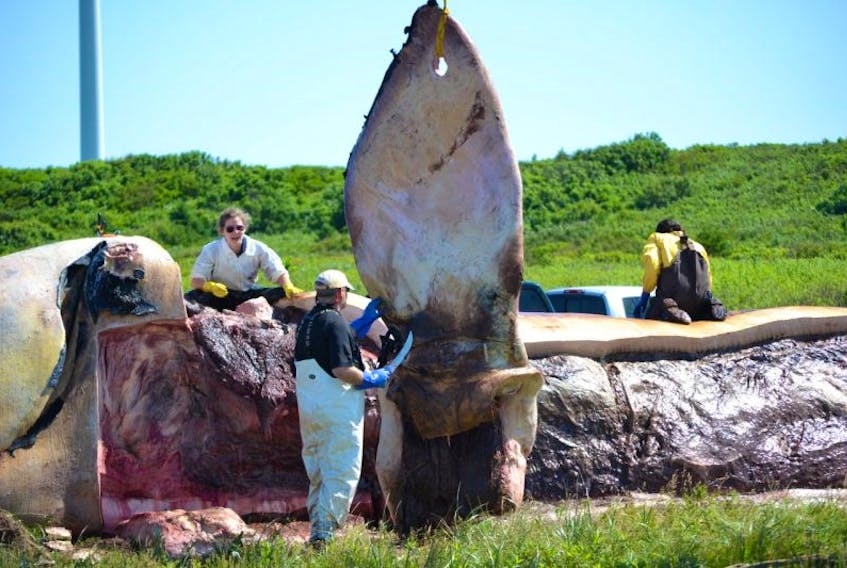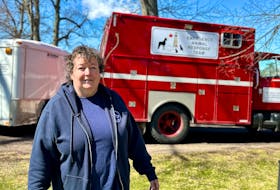As it is, the director of the Marine Animals Response Society (MARS) is in western P.E.I. this week helping with the retrieval and examination of dead North Atlantic right whales.
Wimmer was on the Phee Shore beach in Norway, P.E.I. Wednesday evening when one of six right whales to be found floating in the Gulf of St. Lawrence over the past three weeks was floated to shore and towed off the beach.
“Even one of these animals is tragic,” she said as she prepared to join a team of specialists in examining the carcass Thursday morning.

But in the past three weeks six of the massive animals have been found floating, making it the largest die-off of rare North Atlantic right whales in North America. With only 525 of the marine mammals in the world, loss of six in a short time span makes it all the more tragic, Wimmer acknowledged.
Soon the knives came out and a thick layer of blubber was sliced away to reveal the organs of the adult male whale. Specialists want to determine why the whale died
“It’s a tragedy that this has happened so figuring out what happened is probably foremost on everyone’s minds that are here,” said Wimmer. They hope to get to examine one, maybe two more of the dead whales.
The P.E.I. government offered the Phee Shore, a well-known whale burial ground for the intensive study.
Wimmer suggested disease or ingesting toxic algae are possible causes of death, but she acknowledged collisions with ships, entanglement in fishing gear or consequences of noise pollution are other possible causes. “They will go through it very systematically to figure out what it could have been caused by,” she said. A DFO department statement indicated the necropsy could take several days to complete, and it could take weeks or months to learn the results.
World-class experts dropped everything they were doing to join the investigative team, the MARS director noted.
“The main thing, if it is something that’s human related, something that we can control, then we absolutely have to know,” she said.
“For us, we’d like to never have to deal with this again in relation to human activities.”
Right whales, Wimmer said, got their name because whalers described them as the “right” whale to catch. Because of their thick layer of blubber they float after they are killed, making them easy to harvest. They were hunted almost to the point of extinction and their population has not rebounded since the whaling stopped.
“It’s so sad that its name came from the harm that we did to them.,” Wimmer commented.
In the same waters where the dead whales have been located, Wimmer said survey planes are still finding live whales.
But she noted one of the whales found dead was last sighted in April, seemingly healthy.









